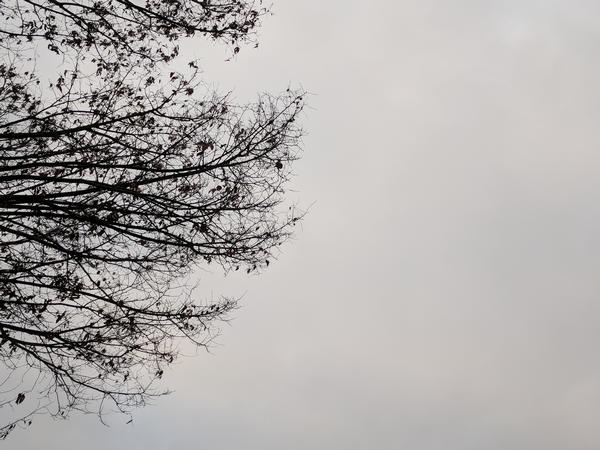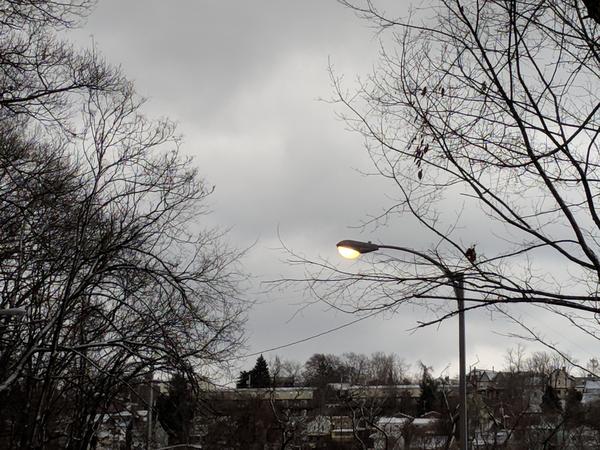
We’ve had a long run of overcast days that began on Sunday, December 10.
On Monday morning Pittsburgh looked gray outside my window.

On Tuesday it was so gloomy that a few street lights came on in Schenley Park at 11:30am.

On Wednesday we had a splash of sun in the morning, then overcast skies and snow. Here’s the sky above PPG Place downtown on Wednesday at 4:15pm. The rest of the week was partly overcast, too.

This is not just one layer of clouds. It’s often one or two low layers of broken clouds overtopped by an overcast layer.
Cloud cover is reported for aviation purposes in Weather Observations and TAF/METAR(*) at Pittsburgh International Airport (KPIT). Here’s the cloud cover for this morning and the three times photographed above:
- 11 Dec 8:15 am … OVC030 = Overcast at 3,000 feet
- 12 Dec 11:35am … BKN008 OVC039 = Broken clouds at 800 feet, Overcast at 3,900
- 13 Dec 4:16 pm … FEW014 OVC024 = Few clouds at 1,400 feet, Overcast at 2,400
- 16 Dec 7:00am … OVC041 = Overcast at 4,100
My husband tries to see the good in everything. He sees value in a rainy day (we need rain on a regular basis) so he wondered, “What’s the value of an overcast day? What good is it?”
Ummm… perhaps… You can’t get a sunburn when the clouds are this thick.
That’s a poor excuse for so much gloom.
(photos by Kate St. John)
p.s. (*) TAF = Terminal Aerodrome Forecast. METAR = Meteorological Terminal Aviation Routine Weather Report. “Terminal” = airport terminal.
In general, overcast skies are better than clear bright ones at hawk watches.
At least in terms of visibility of migrating birds.
Cloud cover acts as a blanket, keeping the nights warmer.
Cloud cover doesn’t stop UV rays. You can definitely get sunburn on an overcast day. Still, not that likely when we’re all bundled up against the cold.
I moved to Pittsburgh in 1986 from San Antonio Texas, which is in the ‘sun belt.’ It averaged 300 sunny days per year. Pittsburgh at that time averaged ….wait for it….65! Yikes. Lovin’ being a Pittsburgher though after 31 years here!
I have read that scientists have found that there is now what they call global dimming from increased cloud cover, a significant amount of which comes from airplane contrails.